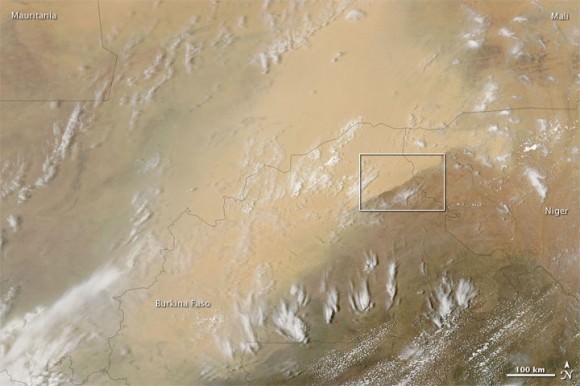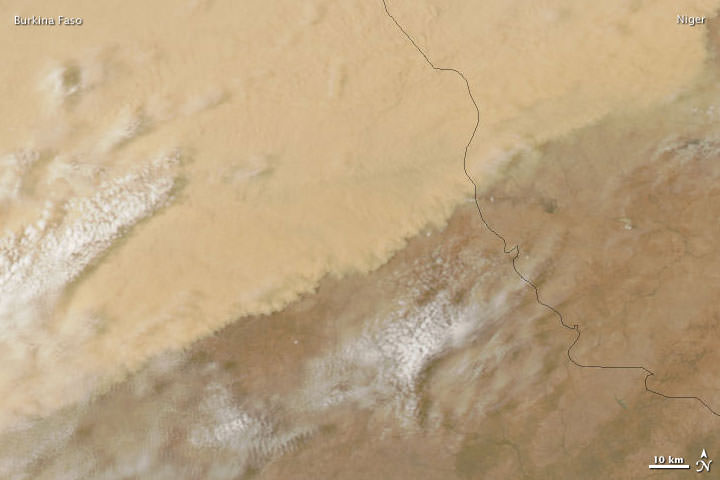[/caption]
Wow — this looks HUGE from orbit — can you imagine standing out in the Sahara Desert and seeing this gigantic wall of dust heading right towards you? The Moderate Resolution Imaging Spectroradiometer (MODIS) on NASA’s Aqua satellite observed this wall of dust on April 22, 2010 which spans hundreds of kilometers. See the image below for a wider view of the area.

The region affected by this dust storm includes not just the Sahara Desert but also the Sahel, a semi-arid grassland region bordering the massive desert on the south. The dust plume hovers primarily over Burkina Faso and Mali. Straddling the border between Burkina Faso and Niger, an especially thick layer of dust appears to push southeastward.
Source: NASA Earth Observatory


Amazing pictures. There are still a ton of wonders to discover right here on Earth. Reminds me of that scene from The Mummy when the plane gets swallowed by the wall of dust.
This big clouds can make it all the way to the Carribean. I lived on St. Croix many years ago and we would get the dust which we called the Saharan Haze. Usually in April or May.
Wow! Are there any ground-based photos or videos of this dust storm? Probably looks a lot like this: http://www.youtube.com/watch?v=95tmYmeHf84
OMG, this is terrifying and amazing at the same time…. holy smoke! 😉
I wonder if this was the dust storm that dropped all over my car in Cornwall UK a few days later.
Under the microscope it looked like quartz crystals and we do get N. African dust here.
“… can you imagine standing out in the Sahara Desert and seeing this gigantic wall of dust heading right towards you?”
Yes, I can. I have seen several of those movies with an evil mummy, and each movie had at least one “gigantic wall of dust heading right towards” me 😉
Looks like somewhere on Mars…?
@ Brian Sheen
Got something similar here in Cork, Ireland, we took two samples about 70k apart, we saw some sulfur and olivine as well as lots of quartz under the microscope. Extremely fine grained stuff, to the naked eye it was a fine light brown colour with visible sparking probably from the quartz. We concluded ash fall from Iceland.